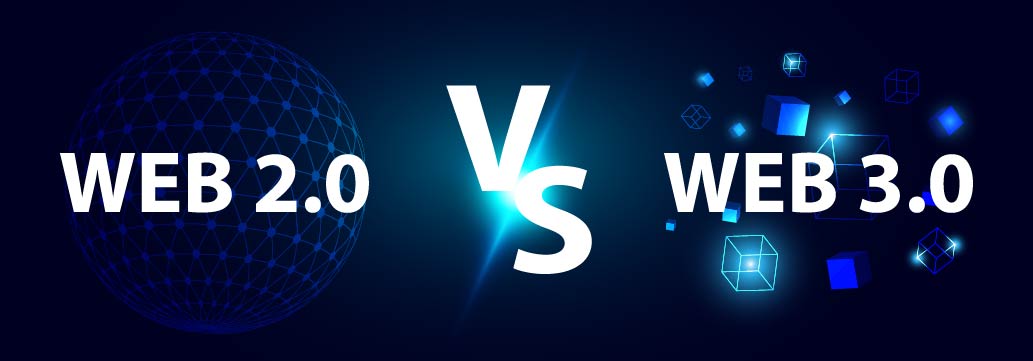08 May 2025
Web 3.0 apps v/S Web 2.0 Apps Pros and Cons & list of Apps

The development of the web has greatly changed how we interact, share information, and create new things. Starting with the simple, static websites of Web 1.0, we moved to the more dynamic and interactive Web 2.0, where users could engage more actively. Now, with the rise of Web 3.0, we’re seeing a shift towards decentralized technology. Looking ahead to Web 4.0, the web is expected to become smarter, more personalized, and even more connected through AI and advanced systems. This article looks at the web’s evolution and what the future might hold.
Before understanding the difference between the two let us understand what Web 2.0 and Web 3.0 are.
What is Web 2.0?
Web 2.0 is referred to as the second version of the World Wide Web, in which the emphasis changes from static online platforms to dynamic, interactive experiences. It empowers users to actively create, share, and interact with content rather than just consume it. This era is marked by platforms that strengthen collaboration, increase the number of social networking, and create user-driven content, such as blogs and social media sites. Web 2.0 revamped the way people use the internet, emphasizing collaboration and connectivity between services and users.
Key features of Web 2.0 include:
- Interactivity: Websites and platforms promote user participation and real-time engagement.
- User-Generated Content (UGC): Users have the ability to create, share, and publish their own content with ease.
- Social Networking: Facebook, Twitter, and LinkedIn enable individuals to build and interact with communities.
- Rich User Experience: Websites offer responsive, engaging interfaces with media such as videos and images.
- Tagging and Folksonomy: Users categorize and organize content through the use of personalized tags.
- Cloud-Based Services: Many applications are hosted in the cloud, allowing for access from anywhere with an internet connection.
What is Web 3.0?
As when we define Web 3.0 it marks a huge impact on the development of the Internet, highlighting the ability to comprehend and evaluate data contextually. Instead of simply storing information, the Web will improve the capacity to interpret and understand it, enabling more personalized interactions. This development is all about moving away from big companies being in control and giving users more power by using technology that’s spread out and not controlled by one central authority.
Additionally, Web 3.0 promises to provide a more engaging online experience by merging technologies such as augmented reality (AR), virtual reality (VR), and more. These technologies create a deeper, more interactive connection between the physical and digital worlds. Ultimately, Web 3.0 blends these innovations to create a smarter, more user-focused Internet.
Web 2.0 and Web 3.0 each come with their own pros and cons, marking different stages in the internet's development.
Technological Differences
When comparing both aspects, Web 2.0 is based on centralized servers, with major corporations controlling much of the data and online interactions. In contrast to that, Web 3.0 emphasizes decentralization, utilizing blockchain and other technologies to disperse control and data across multiple sources, diminishing single entities' influence. While Web 2.0 introduced interactive and user-friendly platforms, Web 3.0 advances this further by integrating AI-powered interfaces, augmented reality (AR), virtual reality (VR), and other cutting-edge technologies.
Data Ownership and Privacy
In Web 2.0, centralized platforms often require users to exchange personal data for access to services, with little clarity on how that data will be used. In contrast, Web 3.0 aims to give users full ownership of their data, allowing them to have direct control over what information is shared, who can access it, and under what terms.
Monetization Frameworks
In Web 2.0, platforms collect large amounts of user data, which marketers leverage to target specific audiences with ads being the primary revenue source. However, this often leads to a disappointing
user experience, including user privacy concerns and interruptive advertisements. On the other hand, Web 3.0 aims to explore new ways of monetization, such as cryptocurrency and tokenization, leading to microtransactions, decentralized finance (DeFi), and direct peer-to-peer transactions.
In conclusion
Web 3.0 builds on the foundation of Web 2.0 by decentralizing control, enhancing data privacy, and incorporating advanced technologies to create a more personalized and user-centric Internet. This evolution promises a smarter, more connected digital experience.


